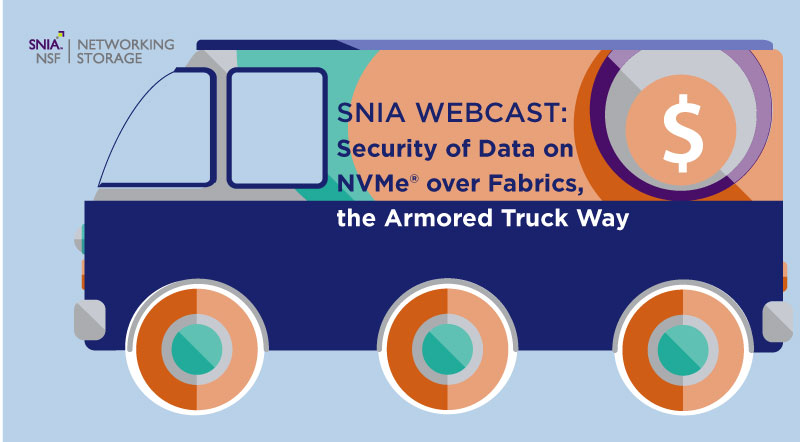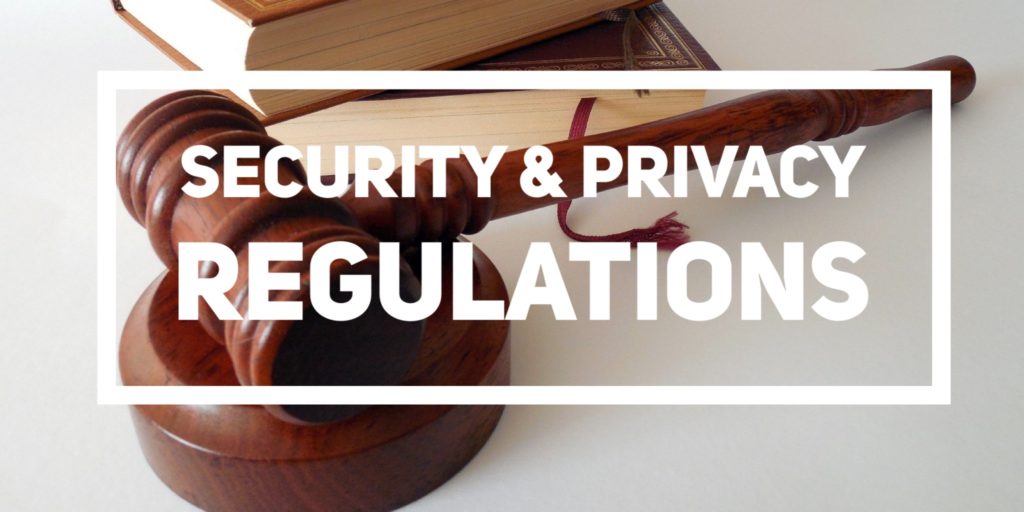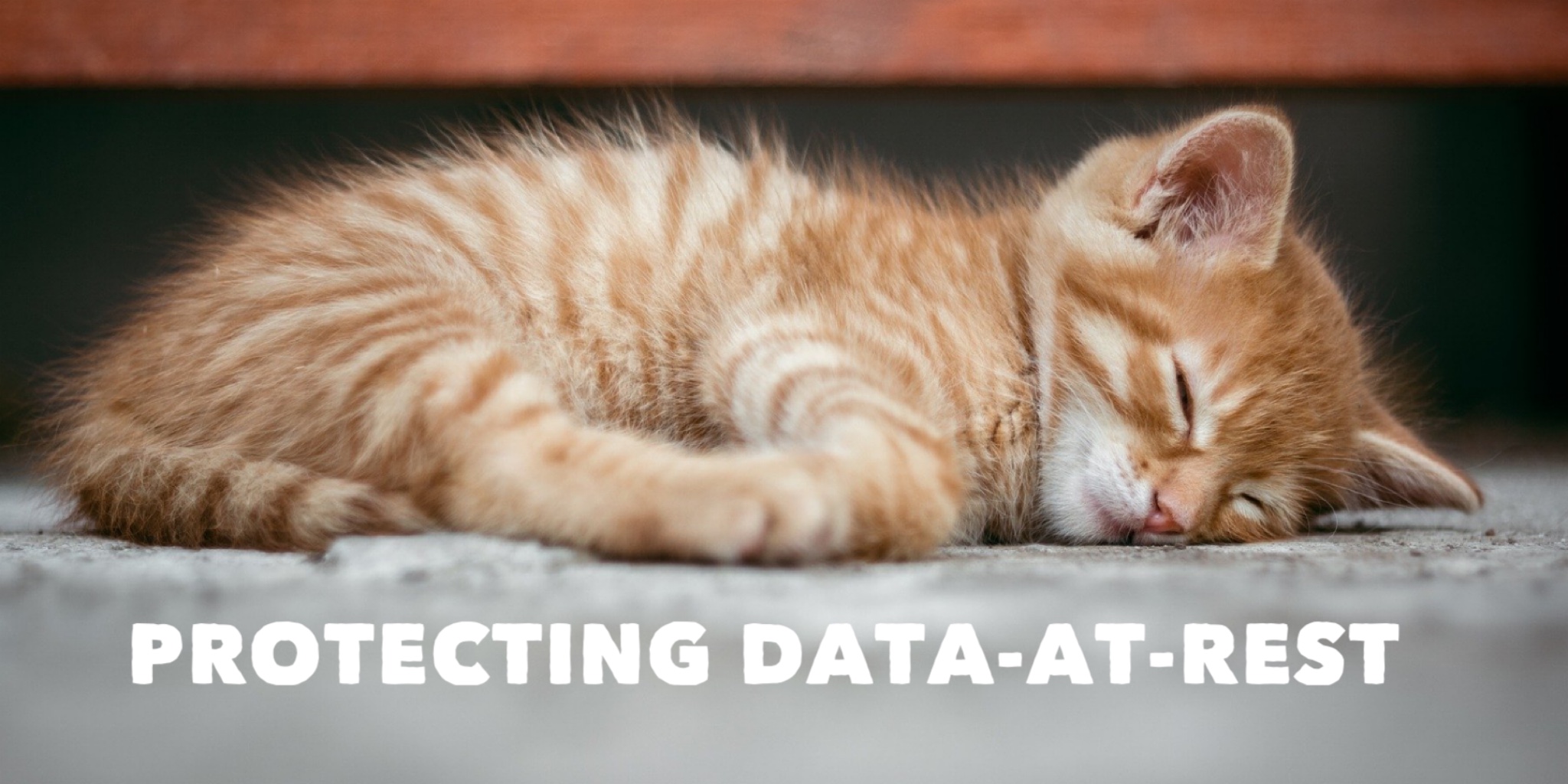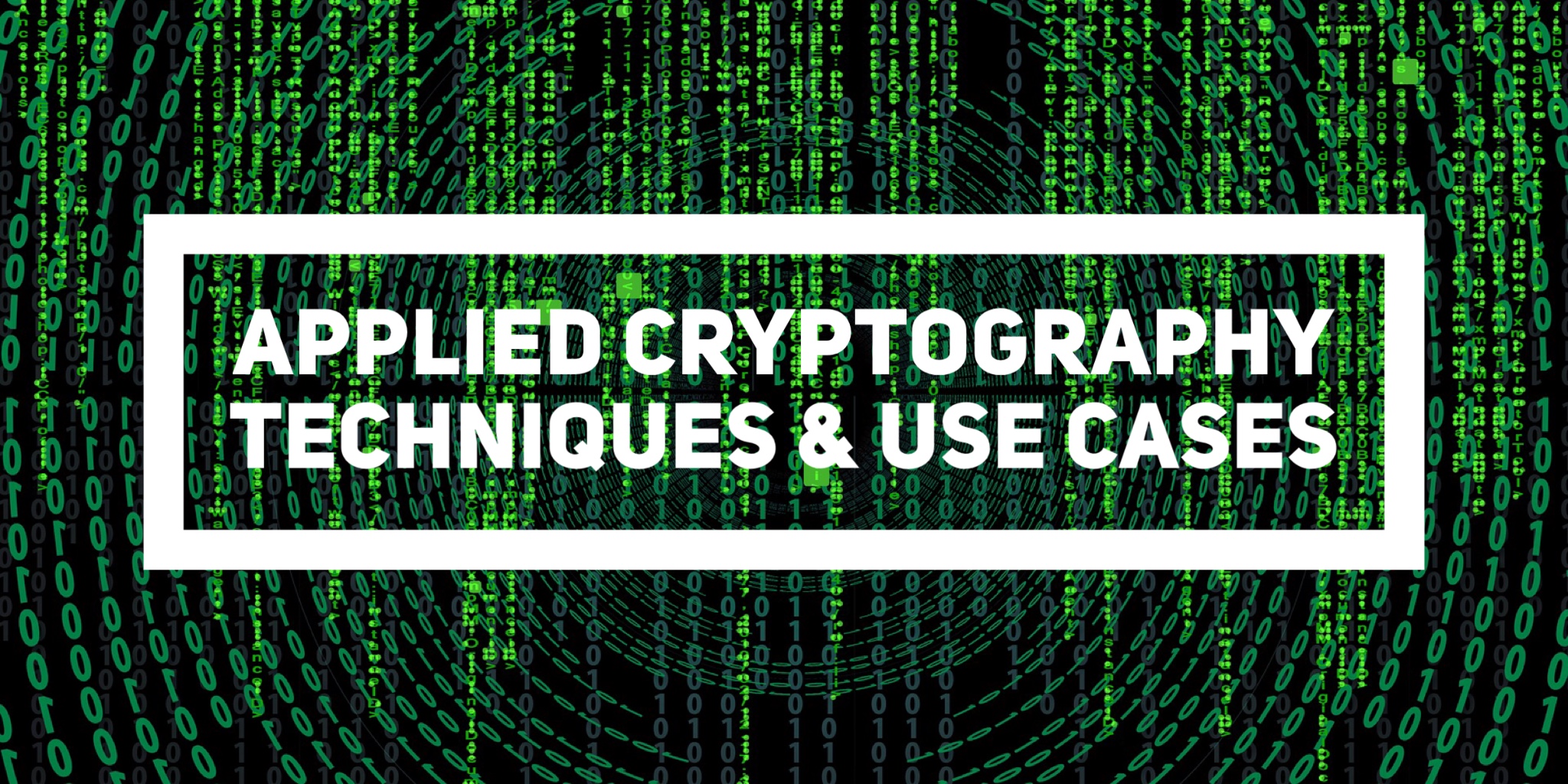- Industry trends and regulations around data security
- Potential threats and vulnerabilities
- Existing security mechanisms and best practices
- How to secure NVMe data in flight and at rest
- Ecosystem and market dynamics
- Upcoming standards

Protecting NVMe over Fabrics Data from Day One, The Armored Truck Way
Apr 27, 2021

Find a similar article by tags
Data Protection Network Security Networked Storage NVMe NVMe over Fabrics NVMe-oF storage securityDoes this Look Outdated to You?
Feb 22, 2021

Last month, the SNIA Networking Storage Forum (NSF) took a different perspective on the storage networking technologies we cover by discussing technologies and practices that you may want to reconsider. The webcast was called “Storage Technologies & Practices Ripe for Refresh.” I encourage you to watch it on-demand. It was an interesting session where my colleagues Eric Hibbard, John Kim, and Alex McDonald explored security problems, aging network protocols, and NAS protocols. It was quite popular. In fact, we’re planning more in this series, so stay tuned.
The audience asked us some great questions during the live event and as promised, here are our answers:
Q. How can I tell if my SSH connections are secure?
A. Short of doing a security scan of a server’s SSH port (typically TCP/IP port 22) it can be difficult to know if your connection is secure. In general, the following are recommended:
- Use SSH version 2 or later
- Disable server SSH root logins
- Authenticate clients to servers by using SSH key pairs (don’t use the same keys on multiple systems)
- Change the default SSH port
- Filter connections using TCP wrappers or similar network filtering
- Set idle timeouts that close SSH connections. If you don’t need SSH on a server, make sure it is disabled.
Q. How can customers determine if they are using updated security technologies?
A. Security technologies can be both security features/capabilities as well as elements that address the security posture of a system at any given point in time. From a feature perspective, it is often difficult to change or add them, so it is important to consider requirements for things like encryption, key management, access controls, etc. up front; assume that what you start with is probably all that you will get going forward. Security posture, on the other hand, can be very different. It typically involves configuration changes (e.g., enabling/disabling a security feature), applying patches to operating systems and applications, and updating software to newer versions when security patches are no longer available or are inadequate. Performing regular security scans of systems is also an important element because they will help verify the system is being maintained properly as well as to provide alerts for new problems as the threat landscape changes.
Q. This is not really a question, but rather a comment on NAS protocols, their security is only as good as the authorization on the files. e.g. 777 or everyone type ACLs.
A. The NFSv4 and SMB3 protocols are as secure as you want to make them. Assigning inappropriate authorization is a user error, not a protocol problem.
Q. Can most modern storage systems and operating systems support NFSv4 and SMBv3?
A. The majority of NAS systems from most vendors can support NFSv4 and SMB3, and many will allow access to the same files with either protocol. (But see the caveats below.) There’s the open source Samba (see here for a protocol that’s SMB3 for Linux and Unix), and Microsoft Windows Server supports NFS v2 v3 and v4.1.
Q. Do obsolete protocols have an impact on multi-protocol (NFS + SMB) access to data?
A. Yes, in several areas; the two biggies are security and locking. On security, NFS and SMB share in common the same terminology (ACLs or access control lists) to describe the security on objects like files and directories; but the underlying security models are different. See this NFS4 ACL overview for more details. Locking is a complex area, and the general rule is; don’t share files between SMB and NFS unless you’re fully aware of how locking works. Obsolete protocols definitely don’t help here, so best avoided. Even with up-to-date protocol stacks there are lots of other gotchas. If you must share between NFS and SMB, involve the vendor of the system that is providing you with this capability, and adhere to their best practices.
From a security perspective, multi-protocol access to data is fraught with access control problems because the access privilege models can vary significantly. This can lead to a situation where an escalation of privileges can occur, granting someone access to data that they should not be allowed to access. Adding obsolete protocols to this mix can further expose data because of the granularity of the access privilege model or complete lack of one.
Q: Could we use robust log system and real-time analysis and real-time configuration, in the transport layer?
A: The network transport layer is Layer 4 in the 7-layer OSI model, most commonly using the TCP or UDP protocols. Both packet logging and filtering tools can be used to monitor Layer 4 traffic, and real-time analysis can be done by a packet analyzer, firewall, intrusion detection/prevention system (IDS/IPS). These tools typically allow capture or filtering of packets based on a combination of their source and destination IP addresses, source and destination ports, and the protocol type (TCP/UDP). More sophisticated networking equipment might also track connections and use deep packet inspection to identify applications at OSI layers 5-7 in the network traffic. Doing such analysis can identify the use of obsolete protocols or applications or detect malware or suspicious activity. Real-time configuration could be used to turn off obsolete or unneeded protocols on servers that no longer need them or to block their traffic from using the network.
Leave a Reply
Does this Look Outdated to You?
Feb 22, 2021

- Use SSH version 2 or later
- Disable server SSH root logins
- Authenticate clients to servers by using SSH key pairs (don’t use the same keys on multiple systems)
- Change the default SSH port
- Filter connections using TCP wrappers or similar network filtering
- Set idle timeouts that close SSH connections. If you don’t need SSH on a server, make sure it is disabled.
Leave a Reply
Questions on Securing Data in Transit Answered
Dec 9, 2020

 Data in transit provides a large attack surface for bad actors. Keeping data secure from threats and compromise while it’s being transmitted was the topic at our live SNIA Networking Storage Forum (NSF) webcast, Securing Data in Transit. Our presenters, Claudio DeSanti, Ariel Kit, Cesar Obediente, and Brandon Hoff did an excellent job explaining how to mitigate risks.
We had several
questions during the live event. Our panel of speakers have been kind enough to
answer them here.
Q. Could we control the most
important point – identity, that is, the permission of every data transportation
must have an identity label, so that we can control anomalies and misbehaviors
easily?
A. That is the purpose of
every authentication protocol: verify the identity of entities participating in
the authentication protocol on the basis of some secret values or certificates
associated with the involved entity. This is similar to verifying the identity
of a person on the basis of an identity document associated with the person.
Q. What is BGP?
A. BGP stands for Border Gateway Protocol, it is a popular routing protocol commonly used across the Internet but also leveraged by many customers in their environments. BGP is used to exchange routing information and next hop reachability between network devices (routers, switches, firewall, etc.). In order to establish this communication among the neighbors, BGP creates a TCP session in port 179 to maintain and exchange BGP updates.
Q. What are ‘north-south’ and
‘east west’ channels?
A. Traditionally
“north-south” is traffic up and down the application or solution
“stack” such as from client to/from server, Internet to/from
applications, application to/from database, application to/from storage, etc.
East-West is between similar nodes–often peers in a distributed application or
distributed storage cluster. For example, east-west could include traffic from
client to client, between distributed database server nodes, between clustered
storage nodes, between hyperconverged infrastructure nodes, etc.
Q. If I use encryption for
data in transit, do I still need a separate encryption solution for data at
rest?
A. The encryption of data in
transit protects the data as it flows through the network and blocks attack
types such as eavesdropping, however, once it arrives to the target the data is
decrypted and saved to the storage unencrypted unless data at rest encryption
is applied. It is highly recommended to use both for best protection, data at rest
protection protects the data in case the storage target is accessed by an
attacker. The SNIA NSF did a deep dive on this topic in a separate webcast “Storage
Networking Security Series: Protecting Data at Rest.”
Q. Will NVMe-oFÔ use 3 different
encryption solutions depending upon whether it’s running over Fibre Channel,
RDMA, or IP?
A. When referring to data in transit,
the encryption type depends on the network type, hence, for different networks
we will use different data-in-motion encryption protocols, nevertheless, they
can all be based on Encapsulating Security Protocol (ESP) with same cipher
suite and key exchange methods.
Q. Can NVMe-oF over IP
already use Transport Layer Security (TLS) for encryption or is this
still a work in progress? Is the NVMe-oF spec aware of TLS?
A. NVMe-oF over TCP already
supports TLS 1.2. The NVM Express
Technical Proposal TP 8011 is adding support for TLS 1.3.
Q. Are there cases where I would want to use both MACsec and IPSec, or use both IPSec and TLS? Does CloudSec rely on either MACSec or IPSec?
A. Because of the number of cyber-attacks
that are currently happening on a daily basis, it is always critical to create
a secure environment in order to protect confidentially and integrity of the
data. MACsec is enabled in a point-to-point Ethernet link and IPSec could be
classified as to be end-to-end (application-to-application or
router-to-router). Essentially you could (and should) leverage both
technologies to provide the best encryption possible to the application.
These
technologies can co-exist with each other without any problem. The same can be
said if the application is leveraging TLS. To add an extra layer of security you
can implement IPSec, for example site-to-site to IPSec VPN. This is true especially
if the communication is leveraging the Internet.
CloudSec,
on the other hand, doesn’t rely on MACsec because MACsec is a point-to-point
Ethernet Link technology and CloudSec provides the transport and encryption
mechanism to support a multi-site encryption communication. This is useful
where more than one data center is required to provide an encryption mechanism
to protect the confidentially and integrity of the data. The CloudSec session
is a point-to-point encryption over Data Center Interconnect on two or more
sites. CloudSec key exchange uses BGP to guarantee the correct information gets
the delivered to the participating devices.
Q. Does FC-SP-2 require
support from both HBAs and switches, or only from the HBAs?
A. For data that moves outside the data center, Fibre Channel Security Protocols (FC-SP-2) for Fibre Channel or IPsec for IP would need to be supported by the switches or routers. No support would be required in the HBA. This is most common use case for FC-SP-2. Theoretically, if you wanted to support FC-SP-2 inside the secure walls of the data center, you can deploy end-to-end or HBA-to-HBA encryption and you won’t need support in the switches. Unfortunately, this breaks some switch features since information the switch relies on would be hidden. You could also do link encryption from the HBA-to-the switch, and this would require HBA and switch support. Unfortunately, there are no commercially available HBAs with FC-SP-2 support today, and if they become available, interoperability will need to be proven. This webcast from the Fibre Channel Industry Association (FCIA) goes into more detail on Fibre Channel security.
Q. Does FC-SP-2 key
management require a centralized key management server or is that optional?
A. For switch-to-switch
encryption, keys can be managed through a centralized server or manually. Other
solutions are available and in production today. For HBAs, in most environments
there would be thousands of keys to manage so a centralized key management
solution would be required and FC-SP provides 5 different options. Today, there
are no supported key management solutions for FC-SP-2 from SUSE, RedHat,
VMware, Windows, etc. and there are no commercially available HBAs that support
FC-SP-2.
This webcast was
part of our Storage Networking Security Webcast
Series and they are all
available on demand. I encourage you to take a look at the other SNIA
educational webcasts from this series:
Data in transit provides a large attack surface for bad actors. Keeping data secure from threats and compromise while it’s being transmitted was the topic at our live SNIA Networking Storage Forum (NSF) webcast, Securing Data in Transit. Our presenters, Claudio DeSanti, Ariel Kit, Cesar Obediente, and Brandon Hoff did an excellent job explaining how to mitigate risks.
We had several
questions during the live event. Our panel of speakers have been kind enough to
answer them here.
Q. Could we control the most
important point – identity, that is, the permission of every data transportation
must have an identity label, so that we can control anomalies and misbehaviors
easily?
A. That is the purpose of
every authentication protocol: verify the identity of entities participating in
the authentication protocol on the basis of some secret values or certificates
associated with the involved entity. This is similar to verifying the identity
of a person on the basis of an identity document associated with the person.
Q. What is BGP?
A. BGP stands for Border Gateway Protocol, it is a popular routing protocol commonly used across the Internet but also leveraged by many customers in their environments. BGP is used to exchange routing information and next hop reachability between network devices (routers, switches, firewall, etc.). In order to establish this communication among the neighbors, BGP creates a TCP session in port 179 to maintain and exchange BGP updates.
Q. What are ‘north-south’ and
‘east west’ channels?
A. Traditionally
“north-south” is traffic up and down the application or solution
“stack” such as from client to/from server, Internet to/from
applications, application to/from database, application to/from storage, etc.
East-West is between similar nodes–often peers in a distributed application or
distributed storage cluster. For example, east-west could include traffic from
client to client, between distributed database server nodes, between clustered
storage nodes, between hyperconverged infrastructure nodes, etc.
Q. If I use encryption for
data in transit, do I still need a separate encryption solution for data at
rest?
A. The encryption of data in
transit protects the data as it flows through the network and blocks attack
types such as eavesdropping, however, once it arrives to the target the data is
decrypted and saved to the storage unencrypted unless data at rest encryption
is applied. It is highly recommended to use both for best protection, data at rest
protection protects the data in case the storage target is accessed by an
attacker. The SNIA NSF did a deep dive on this topic in a separate webcast “Storage
Networking Security Series: Protecting Data at Rest.”
Q. Will NVMe-oFÔ use 3 different
encryption solutions depending upon whether it’s running over Fibre Channel,
RDMA, or IP?
A. When referring to data in transit,
the encryption type depends on the network type, hence, for different networks
we will use different data-in-motion encryption protocols, nevertheless, they
can all be based on Encapsulating Security Protocol (ESP) with same cipher
suite and key exchange methods.
Q. Can NVMe-oF over IP
already use Transport Layer Security (TLS) for encryption or is this
still a work in progress? Is the NVMe-oF spec aware of TLS?
A. NVMe-oF over TCP already
supports TLS 1.2. The NVM Express
Technical Proposal TP 8011 is adding support for TLS 1.3.
Q. Are there cases where I would want to use both MACsec and IPSec, or use both IPSec and TLS? Does CloudSec rely on either MACSec or IPSec?
A. Because of the number of cyber-attacks
that are currently happening on a daily basis, it is always critical to create
a secure environment in order to protect confidentially and integrity of the
data. MACsec is enabled in a point-to-point Ethernet link and IPSec could be
classified as to be end-to-end (application-to-application or
router-to-router). Essentially you could (and should) leverage both
technologies to provide the best encryption possible to the application.
These
technologies can co-exist with each other without any problem. The same can be
said if the application is leveraging TLS. To add an extra layer of security you
can implement IPSec, for example site-to-site to IPSec VPN. This is true especially
if the communication is leveraging the Internet.
CloudSec,
on the other hand, doesn’t rely on MACsec because MACsec is a point-to-point
Ethernet Link technology and CloudSec provides the transport and encryption
mechanism to support a multi-site encryption communication. This is useful
where more than one data center is required to provide an encryption mechanism
to protect the confidentially and integrity of the data. The CloudSec session
is a point-to-point encryption over Data Center Interconnect on two or more
sites. CloudSec key exchange uses BGP to guarantee the correct information gets
the delivered to the participating devices.
Q. Does FC-SP-2 require
support from both HBAs and switches, or only from the HBAs?
A. For data that moves outside the data center, Fibre Channel Security Protocols (FC-SP-2) for Fibre Channel or IPsec for IP would need to be supported by the switches or routers. No support would be required in the HBA. This is most common use case for FC-SP-2. Theoretically, if you wanted to support FC-SP-2 inside the secure walls of the data center, you can deploy end-to-end or HBA-to-HBA encryption and you won’t need support in the switches. Unfortunately, this breaks some switch features since information the switch relies on would be hidden. You could also do link encryption from the HBA-to-the switch, and this would require HBA and switch support. Unfortunately, there are no commercially available HBAs with FC-SP-2 support today, and if they become available, interoperability will need to be proven. This webcast from the Fibre Channel Industry Association (FCIA) goes into more detail on Fibre Channel security.
Q. Does FC-SP-2 key
management require a centralized key management server or is that optional?
A. For switch-to-switch
encryption, keys can be managed through a centralized server or manually. Other
solutions are available and in production today. For HBAs, in most environments
there would be thousands of keys to manage so a centralized key management
solution would be required and FC-SP provides 5 different options. Today, there
are no supported key management solutions for FC-SP-2 from SUSE, RedHat,
VMware, Windows, etc. and there are no commercially available HBAs that support
FC-SP-2.
This webcast was
part of our Storage Networking Security Webcast
Series and they are all
available on demand. I encourage you to take a look at the other SNIA
educational webcasts from this series:
- Understanding Storage Security and Threats
- Protecting Data at Rest
- Encryption 101
- Key Management 101
- Security & Privacy Regulations
- Applied Cryptography
Find a similar article by tags
Data in Transit Data Protection data security Networked Storage storage securityLeave a Reply
How Can You Keep Data in Transit Secure?
Oct 12, 2020

It's well known that data is often considered less secure while in motion, particularly across public networks, and attackers are finding increasingly innovative ways to snoop on and compromise data in flight. But risks can be mitigated with foresight and planning. So how do you adequately protect data in transit? It’s the next topic the SNIA Networking Storage Forum (NSF) will tackle as part of our Storage Networking Security Webcast Series. Join us October 28, 2020 for our live webcast Securing Data in Transit.
In this webcast, we'll cover what the threats are to your data as it's transmitted, how attackers can interfere with data along its journey, and methods of putting effective protection measures in place for data in transit. We’ll discuss:
- The large attack surface that data in motion provides, and an overview of the current threat landscape
- What transport layer security protocols (SSL, TLS, etc.) are best for protecting data in transit?
- Different encryption technologies and their role in protecting data in transit
- A look at Fibre Channel security
- Current best practice deployments; what do they look like?
Register today and join us on a journey to provide safe passage for your data.
Leave a Reply
How Can You Keep Data in Transit Secure?
Oct 12, 2020

- The large attack surface that data in motion provides, and an overview of the current threat landscape
- What transport layer security protocols (SSL, TLS, etc.) are best for protecting data in transit?
- Different encryption technologies and their role in protecting data in transit
- A look at Fibre Channel security
- Current best practice deployments; what do they look like?
Leave a Reply
Security & Privacy Regulations: An Expert Q&A
Sep 24, 2020

 Last month the SNIA Networking Storage Forum
continued its Storage Networking Security Webcast series with a presentation on Security & Privacy Regulations. We were fortunate to have security experts, Thomas Rivera and Eric Hibbard, explain the current state of regulations related to data protection and data privacy. If you missed it, it’s available on-demand.
Q. Do you see the US working towards a national policy around privacy
or is it going to stay state-specified?
A. This probably will not happen anytime soon due to political reasons. Having a national policy on privacy is not necessarily a good thing, depending on your state. Such a policy would likely have a preemption clause and could be used to diminish requirements from states like CA and MA.
Q. Can you quickly summarize the IoT law? Does it force
IoT manufactures to continually support IoT devices (ie. security patches) through its lifetime?
A. The California IoT law is vague, in that it states that
devices are to be equipped with “reasonable” security feature(s) that
are all of the following:
Last month the SNIA Networking Storage Forum
continued its Storage Networking Security Webcast series with a presentation on Security & Privacy Regulations. We were fortunate to have security experts, Thomas Rivera and Eric Hibbard, explain the current state of regulations related to data protection and data privacy. If you missed it, it’s available on-demand.
Q. Do you see the US working towards a national policy around privacy
or is it going to stay state-specified?
A. This probably will not happen anytime soon due to political reasons. Having a national policy on privacy is not necessarily a good thing, depending on your state. Such a policy would likely have a preemption clause and could be used to diminish requirements from states like CA and MA.
Q. Can you quickly summarize the IoT law? Does it force
IoT manufactures to continually support IoT devices (ie. security patches) through its lifetime?
A. The California IoT law is vague, in that it states that
devices are to be equipped with “reasonable” security feature(s) that
are all of the following:
- Appropriate to the nature and function of the device
- Appropriate to the information it may collect, contain, or transmit
- Designed to protect the device and any information contained therein from unauthorized access, destruction, use, modification, or disclosure
Leave a Reply
Non-Cryptic Answers to Common Cryptography Questions
Sep 23, 2020

 The SNIA Networking Storage Forum’s Storage Networking Security Webcast Series continues to examine the many different aspects of storage security. At our most recent webcast on applied cryptography, our experts dove into user authentication, data encryption, hashing, blockchain and more. If you missed the live event, you can watch it on-demand. Attendees of the live event had some very interesting questions on this topic and here are answer to them all:
Q. Can hashes be used for storage deduplication? If
so, do the hashes need to be 100% collision-proof to be used for deduplication?
A. Yes, hashes are often used for storage deduplication.
It’s preferred that they be collision-proof but it’s not required if the deduplication software does a bit-by-bit comparison of any files that produce the same hash in order to verify if they really are identical or not. If the hash is 100% collision-proof then there is no need to run bit-by-bit comparisons of files that produce the same hash value.
Q. Do cloud or backup service vendors use blockchain
proof of space to prove to customers how much storage space is available or has been reserved?
A. There are some vendors who are using proof of space to
map or plot the device. Once the device is plotted you can have a report which
provides the summary of storage space available. Some vendors use it today.
Since mining is the most popular application today, mining users use this
information to report available space for mining pool applications. Can you use
it for enterprise cloud to monitor the available disk space – absolutely.
Q. If a vendor provides a guarantee of space to a
customer using blockchain, does something prevent them from filling up the
space before the customer uses that space?
A. Once the disk is plotted there is no way for any other
application to use it. It will be flagged as an error. In fact, it’s a really
great way to ensure that no attacks are occurring on the disk itself. Each
block of space is mapped and indexed.
Q. I lost track during the explanation about proofs in
blockchain, what are those algorithms used for?
A. There are two concepts which are normally discussed and
create the confusion. One is that Blockchain can use different cryptographic
hash algorithms such as SHA-256 (one of the most popular), Whirpool, RIPEMD
(RACE Integrity Primitives Evaluation Message Digest), Dagger-Hashimoto and
others). Mercle tree is a blockchain construct which allows one to build a
chain by using hashes and data blocks. Consensus protocols is protocol for
decision making such as Proof of Work, Proof of Space, Proof of Stake and etc.
Each consensus protocol is using the distributed ledger to make a record for
the block of data transferred. Use of cryptography hashes allows us to create
trustless concept with encrypting data which is being transferred from point A
to point B. The consensus protocol allows us to keep the record of the data
blocks in distributed ledgers. This is a brief answer to the question and if
you would like to get additional information please contract
olga@myactionspot.com I will be happy to deliver the detailed session to
address this topic.
Q. How does encryption work in Storage Replication? Please advise whether this exists?
A. Yes it exists. Encryption can be applied to data at rest
and that encrypted data can be replicated, and/or the replication process can
encrypt the data temporarily while it’s in transit.
Q. Regarding blockchain: assuming a new transaction
(nobody has information yet), is it possible that when sending the broadcast
someone modifies part of the data (0.1% for example) and this data continues to
travel over the network without being considered corrupted?
A. The first block of data which is building the first
blockchain creates the authenticity. If the block and hash just created are originals they
will be accepted as originals, recorded in distributed ledger and moved across
the chain. BUT
if you are attempting to send a block on a blockchain which is already
authenticated this block will be not authenticated and discarded once it’s on
the chain.
Remember we said this was part of a series? We’ve already
had a lot of great experts cover a wide range of storage security topics. You
can access all of them at the SNIA
Educational Library.
The SNIA Networking Storage Forum’s Storage Networking Security Webcast Series continues to examine the many different aspects of storage security. At our most recent webcast on applied cryptography, our experts dove into user authentication, data encryption, hashing, blockchain and more. If you missed the live event, you can watch it on-demand. Attendees of the live event had some very interesting questions on this topic and here are answer to them all:
Q. Can hashes be used for storage deduplication? If
so, do the hashes need to be 100% collision-proof to be used for deduplication?
A. Yes, hashes are often used for storage deduplication.
It’s preferred that they be collision-proof but it’s not required if the deduplication software does a bit-by-bit comparison of any files that produce the same hash in order to verify if they really are identical or not. If the hash is 100% collision-proof then there is no need to run bit-by-bit comparisons of files that produce the same hash value.
Q. Do cloud or backup service vendors use blockchain
proof of space to prove to customers how much storage space is available or has been reserved?
A. There are some vendors who are using proof of space to
map or plot the device. Once the device is plotted you can have a report which
provides the summary of storage space available. Some vendors use it today.
Since mining is the most popular application today, mining users use this
information to report available space for mining pool applications. Can you use
it for enterprise cloud to monitor the available disk space – absolutely.
Q. If a vendor provides a guarantee of space to a
customer using blockchain, does something prevent them from filling up the
space before the customer uses that space?
A. Once the disk is plotted there is no way for any other
application to use it. It will be flagged as an error. In fact, it’s a really
great way to ensure that no attacks are occurring on the disk itself. Each
block of space is mapped and indexed.
Q. I lost track during the explanation about proofs in
blockchain, what are those algorithms used for?
A. There are two concepts which are normally discussed and
create the confusion. One is that Blockchain can use different cryptographic
hash algorithms such as SHA-256 (one of the most popular), Whirpool, RIPEMD
(RACE Integrity Primitives Evaluation Message Digest), Dagger-Hashimoto and
others). Mercle tree is a blockchain construct which allows one to build a
chain by using hashes and data blocks. Consensus protocols is protocol for
decision making such as Proof of Work, Proof of Space, Proof of Stake and etc.
Each consensus protocol is using the distributed ledger to make a record for
the block of data transferred. Use of cryptography hashes allows us to create
trustless concept with encrypting data which is being transferred from point A
to point B. The consensus protocol allows us to keep the record of the data
blocks in distributed ledgers. This is a brief answer to the question and if
you would like to get additional information please contract
olga@myactionspot.com I will be happy to deliver the detailed session to
address this topic.
Q. How does encryption work in Storage Replication? Please advise whether this exists?
A. Yes it exists. Encryption can be applied to data at rest
and that encrypted data can be replicated, and/or the replication process can
encrypt the data temporarily while it’s in transit.
Q. Regarding blockchain: assuming a new transaction
(nobody has information yet), is it possible that when sending the broadcast
someone modifies part of the data (0.1% for example) and this data continues to
travel over the network without being considered corrupted?
A. The first block of data which is building the first
blockchain creates the authenticity. If the block and hash just created are originals they
will be accepted as originals, recorded in distributed ledger and moved across
the chain. BUT
if you are attempting to send a block on a blockchain which is already
authenticated this block will be not authenticated and discarded once it’s on
the chain.
Remember we said this was part of a series? We’ve already
had a lot of great experts cover a wide range of storage security topics. You
can access all of them at the SNIA
Educational Library.
Find a similar article by tags
Blockchain Cryptography Data Encryption Data Protection security storage securityLeave a Reply
A Q&A on Protecting Data-at-Rest
Jul 28, 2020

Leave a Reply
Applied Cryptography Techniques and Use Cases
Jul 15, 2020

- Encryption techniques for authenticating users
- Encrypting data—either at rest or in motion
- Using hashes to authenticate information coding and data transfer methodologies
- Cryptography for Blockchain







Leave a Reply